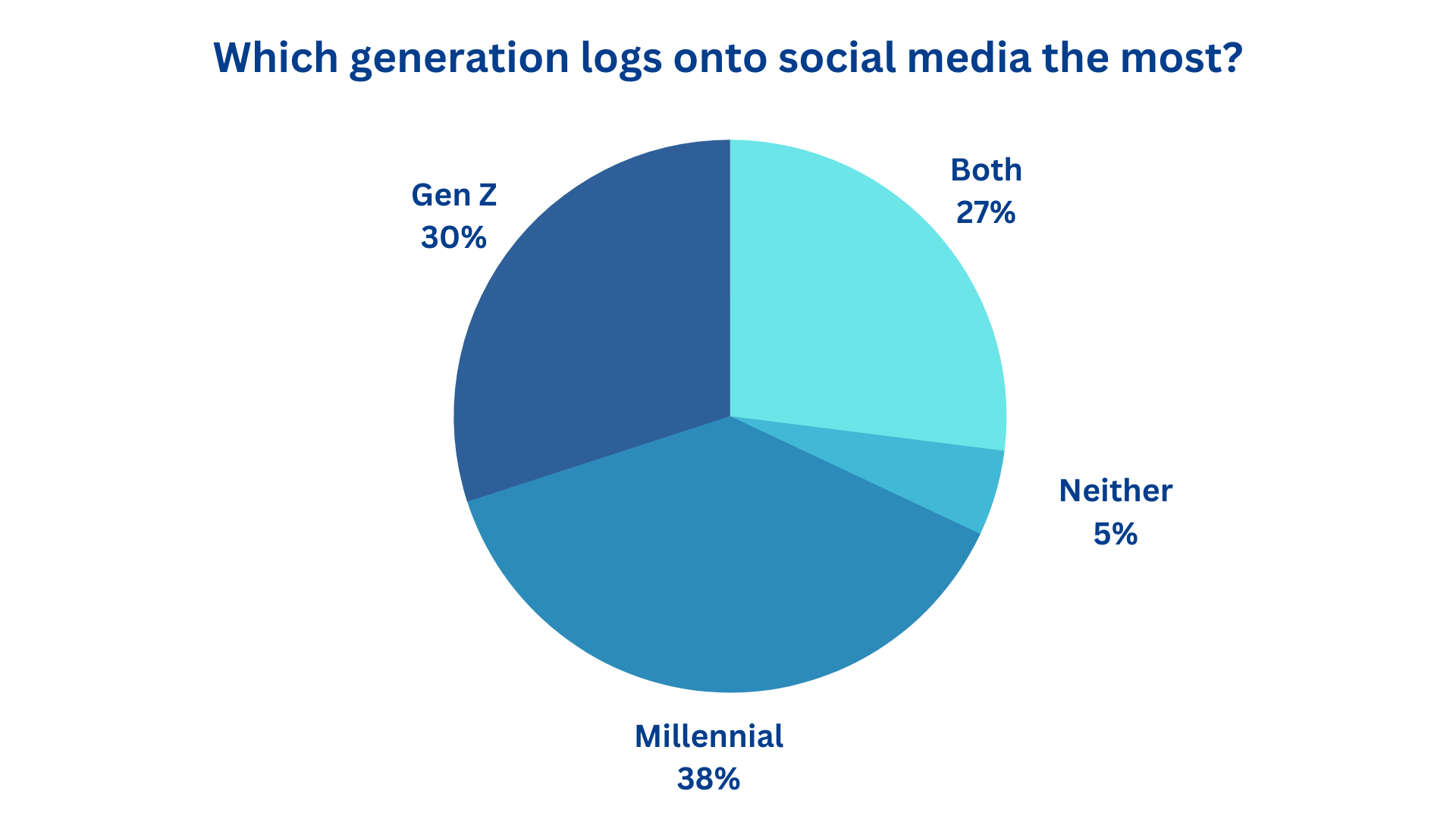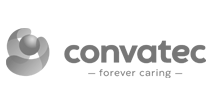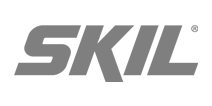
Marketing towards Millennials vs Gen Z
When we think about young adults as a target audience, the phrases ‘Millennials’ and ‘Gen Z’ are often used to group together the younger population as a whole, but is it right, or even effective, to use the same marketing techniques to target both groups?
In a poll conducted by hubspot in July 2023, 56% of people believed the same marketing tactics that could be used to sway millennial’s, would also work on Gen Z. Whilst Millennial’s and Gen Z both grew up in a technology-centric world, are they really all that similar?
Millennial’s were born between 1981 – 1996, whereas Gen Z were born between 1997 – 2012 (According to Beresford Research). While the youngest of Gen Z are celebrating their 11th birthday, the oldest of the Millennial generation will, in 2023, be reaching their 42nd. This is a stark indication that, while both groups are thought of as the younger generation, both are at extremely different stages in their life.
Whilst Millennial’s are buying cars and houses, Gen Z are buying hot wheels and barbie dream houses.
If we look at Gen Z as people 26 and under, we can see their buying patterns, and how that differentiates from a millennial buying journey.
Advancements in Technology
Technology has been an enormous part of life for Gen Z, with 12 being the average age to receive a mobile phone, in comparison to Millennial’s at 17. This has played a huge part in how the generation uses their devices.
Millennials watched innovation begin, whereas Gen Z have been surrounded by it from the beginning, with most having endless access to the internet, social media and streaming services from a young age. We know that Gen-Z are spending vast amounts of time online, nearly 10 hours a day on average, in fact. This is ⅓ higher than the average millennial, and has contributed to Gen Z being twice as likely to make a mobile purchase than millennials.

From a marketing perspective, this information gives us a clue as to how to market to both audiences. The aim is to put your ad in front of your target audience, and so in this case, marketing techniques such as paid social media ads or sponsored collaborations with influencers would be a great way to reach Gen Z. Considering Gen Z are twice as likely to make a mobile purchase, it’s crucial to ensure your ad, and wherever you send your traffic, is optimised for mobile. When traffic first arrives on your website, it should be met by a user-friendly experience, as well as the information the user expected to see once clicking through to the advert.
Different Social Media Channels
Though the days of Myspace are over, Millennials will still largely be found on different social media platforms to Gen Z. Facebook, Instagram, LinkedIn and Twitter seem to be the favourites for those over 27, while the younger generation is opting for more video-based channels like Instagram, Snapchat and Tiktok.
The attention span of each generation sheds some light on why this might be the case. The average millennial has an attention span of 12 seconds, whereas Gen Z has an average attention span of 8 seconds. This is a good indicator as to why Gen Z are choosing platforms with short form video content, which tends to be easy to watch and gets to the point much quicker.
This is imperative when it comes to the differences between marketing between the two. Gen Z expects to know exactly what you’re selling, why they need it and how to buy it, almost immediately. They’re also absorbing more content on a daily basis than any other generation before them, which means your content must not only stand out, but seamlessly fit into their social media experience. You can put your ad in the right place at the right time, but if poorly executed, Gen Z will keep scrolling.

Content Preferences
As mentioned before, Gen Z absorbs a vast amount of content on a daily basis, with their focus landing mainly with short form content that grabs their attention. Millennials have been known to sway towards more long-from content, such as detailed Youtube videos and podcasts. This would previously have given marketers much more time to promote a product or service. Now, marketers are faced with the challenge of grabbing attention almost immediately, ensuring their content fits seamlessly into the user experience.
Another point of interest for marketers is the format in which this content performs best. A recent survey found that 87% of Gen Z prefers ads or marketing content that features actual people talking about the product. Authenticity is extremely important to both these generations, with reviews, influencers and websites like trustpilot all available at the click of a button. It’s important to be authentic and realistic when making claims around your product or service. Research has shown that we, as users, are doing much more research and making more informed decisions before deciding on a product now more than ever. Trust plays a major role in whether your audience would buy from you again, and considering Word of mouth is one of the most effective forms of marketing, brands should bear this in mind.
This information will come in handy when deciding which marketing platform to use based on which age group you’re targeting. For example, a millennial is much more likely to be found watching long form content, on Youtube for example, whereas Gen Z will be found watching short, snappy TikTok videos. This might help you decide whether you’re going to collaborate with a Youtuber, who would maybe do a long video reviewing your product, or a TikTok influencer who will do a 30 second video. Again, it’s all about reaching the right audience, at the right time.
Brand Authenticity
Millennials grew up in an age where Photoshop and editing were taken to the extremes, where magazines and social media portrayed unrealistic beauty standards. As Millennials have grown older, they have also grown tired of this narrative. Both Millennials and Gen Z are now opting for companies with more authentic, more transparent values and missions. Consumers of all ages are leaning more towards brands that are authentic in their advertising, whether that be by being more truthful about how a product performs, or just generally portraying a more realistic narrative around how that product will help you.
Gen Z have become known for being diverse, open-minded dreamers, passionate about making change, and advocating for brands that are helping them turn that dream into reality. They respond well to a brand with personality. Brands that stand for a good cause, for example, diversity, sustainability or allowing people to express their individuality, are favoured among Gen Z. Faceless companies have taken a backseat, making way for brands that interact with their audience, and portray a message users can relate to or believe in.
Getting the right message across is vital now, more than ever. Cancel culture is a large part of today’s society, with the general public boycotting companies that say or do something they deem to be unacceptable. With this in mind, getting the correct message across to your audience has never been more important. As well as this, users are being bombarded with countless advertisements every time they open their social media, and so being able to stand out from the crowd is becoming increasingly more difficult. That’s why relating to the user, and meeting them with a message they believe in, or are interested in, is crucial. Considering Gen Z advocates for brands that stand for the same things they do, making your mission statement a clear narrative in your advertisements will influence how you’re viewed in the public eye, and how likely Gen Z are to buy from you.
Why does any of this matter?
Knowing your target audience is absolutely crucial in order to ensure you are spending your time, money and resources in the right place and on the right people. For example, if you owned a ladies’ shoe shop, you wouldn’t want to place all your advertisements in front of men, your ROI will be much higher if you place those adverts in front of women. Target audiences can be based on demographics, location or behavioural patterns, and it’s so important to choose the right fit for whatever it is you’re advertising. As a marketer, you need to make sure you’re talking to the right people, at the right time, with the right message. Finding your target audience is the perfect way to do this.
Your customers expect a seamless experience when interacting with your brand, and targeting the right audience makes this possible. This is because it gives you the opportunity to speak to the right people for your company, at a time that works best for your marketing goal, whether that be raising awareness for your product, or speaking to them at a time they are most likely to buy. It’s unlikely you’ll achieve the perfect audience for your business on the first try, but by testing different demographics and audiences, you can find the right fit for your business, resulting in the best possible outcome for you.
Door4 has a strong focus on targeting the right audience for your brand, particularly when it comes to PPC marketing. We know that by ensuring you’re talking to an audience that likely has an interest in what you have to say, you can spend more time focusing on optimising those adverts, taking comfort in the fact your budget is focused on the people who matter to your business. We tailor each campaign to the right demographic for you, right down to the language that resonates best with that group.
The bottom line is that, when you drive people to your website, the aim is to turn them into customers. Higher website visitors don’t always equate to higher conversions, which is why it’s so important to ensure the right people are seeing your adverts, people who are genuinely interested in what you’re offering, and people who are likely to convert into loyal customers, resulting in a higher ROI for your ad spend.
 Author: Megan Jones
Author: Megan Jones
References:
-
 03.03.2023|What makes a good client & agency relationship? We asked Door4 Founder, Leon Calverley, to give us the rundown on picking the right agency for your business needs.
03.03.2023|What makes a good client & agency relationship? We asked Door4 Founder, Leon Calverley, to give us the rundown on picking the right agency for your business needs. -
 05.11.2021|When it comes to PPC keyword strategy, the only right way to do it is by having a clear plan and goals. At Door4, we believe using our Test and Learn Approach encourages to scale a business up and achieve ROAS.
05.11.2021|When it comes to PPC keyword strategy, the only right way to do it is by having a clear plan and goals. At Door4, we believe using our Test and Learn Approach encourages to scale a business up and achieve ROAS. -
 14.07.2023|Can understanding the interplay between System 1 and System 2 thinking and incorporating creativity into our marketing strategies cultivate emotional connections?
14.07.2023|Can understanding the interplay between System 1 and System 2 thinking and incorporating creativity into our marketing strategies cultivate emotional connections?
We have a lot to talk about.
ScrapbookDoor4 opinions and insight - our articles features and ramblings.
We explore performance marketing, AI, communications and optimisation.















